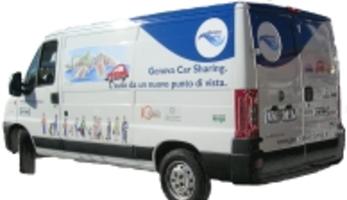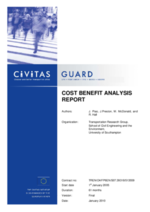Expanding the Genoa car-sharing service
Summary
The aim was to expand the car-sharing service into a fleet of 120 low-emission vehicles and to introduce the car-sharing concept in public institutions.
Implementing sustainable mobility
Car sharing is a key element of Genoa’s Urban Mobility Plan, aimed at reducing the number of cars on the city’s roads. The measure was based on the proven car-sharing service in Genoa in order to fully integrate it within the urban transport system.
The specific goals were to:
- expand the existing car-sharing service in Genoa; and
- set up a mixed car-sharing service for the combined use of private individuals and public institutions, starting with the municipality.
The measure focused on the use of hybrid cars or vehicles powered by biofuel (at least 25 percent of the fleet). A special car-sharing service aimed at disabled drivers was developed by specially equipping cars.
Progress
All the work in this measure was coordinated by the municipality of Genoa in cooperation with the Car Sharing Initiative (ICS) and Genoa Car Sharing (the local car-sharing operator appointed by the municipality of Genoa and belonging to the ICS national circuit). Genoa Car Sharing was selected via a public tender as the unique car-sharing service provider for the city and was appointed by the municipality to develop the operational plan for developing the service, as well as a promotional plan.
Car sharing was introduced in the municipality of Genoa’s fleet: 13 vehicles were deployed during working hours, then released for use by other drivers during non-working hours and weekends. A special car-sharing service (“van sharing”) was also implemented for goods distribution. Agreements were made with various stakeholders (associations of shopkeepers and commercial operators) and 10 vehicles were in operation by the end of the project.
Special promotional activities were organised to promote acceptance of car sharing, including direct marketing and information campaigns to highlight the advantages of the scheme to users (savings on time and resources, access to limited traffic zones and public transport lanes, free parking and discounts on other city amenities such as museums and theatres).
Outcomes
- Successful gradual realisation of car sharing in Genoa with well-functioning technology and satisfied users.
- Expansion of the scheme in the urban area, with more parking zones and more vehicles.
- An increase in the number of car-sharing users.
- Some 1,060 fewer cars on the road (a study indicates that on average each shared car substitutes 13 private cars).
A survey of car-sharing users indicated a reduction in the number of kilometers driver per car per user (based on level of use in July 2008, this represents a saving of around 17.2 percent of kilometers driven before the adoption of car sharing. This represented a saving in fuel consumption of about 477,000 litres per year and an annual reduction of 1,067 tonnes of CO2 emissions from private vehicles.
The good results obtained are mainly attributable to a good distribution of the service over the entire city, to a good communication and promotion strategy, and to the set of policies adopted by the municipality to limit the impact of private car circulation (such as parking pricing policies, limited traffic areas, etc.) and promote car sharing use.
In conclusion, the car-sharing service in Genoa has an important role in creating an integrated urban transport system and in encouraging modal shift away from the private car.
This fact sheet has been updated by a third party on the basis of available information (not by the city itself), therefore we do not guarantee any data with respect to their content, completeness or up-to-dateness.








